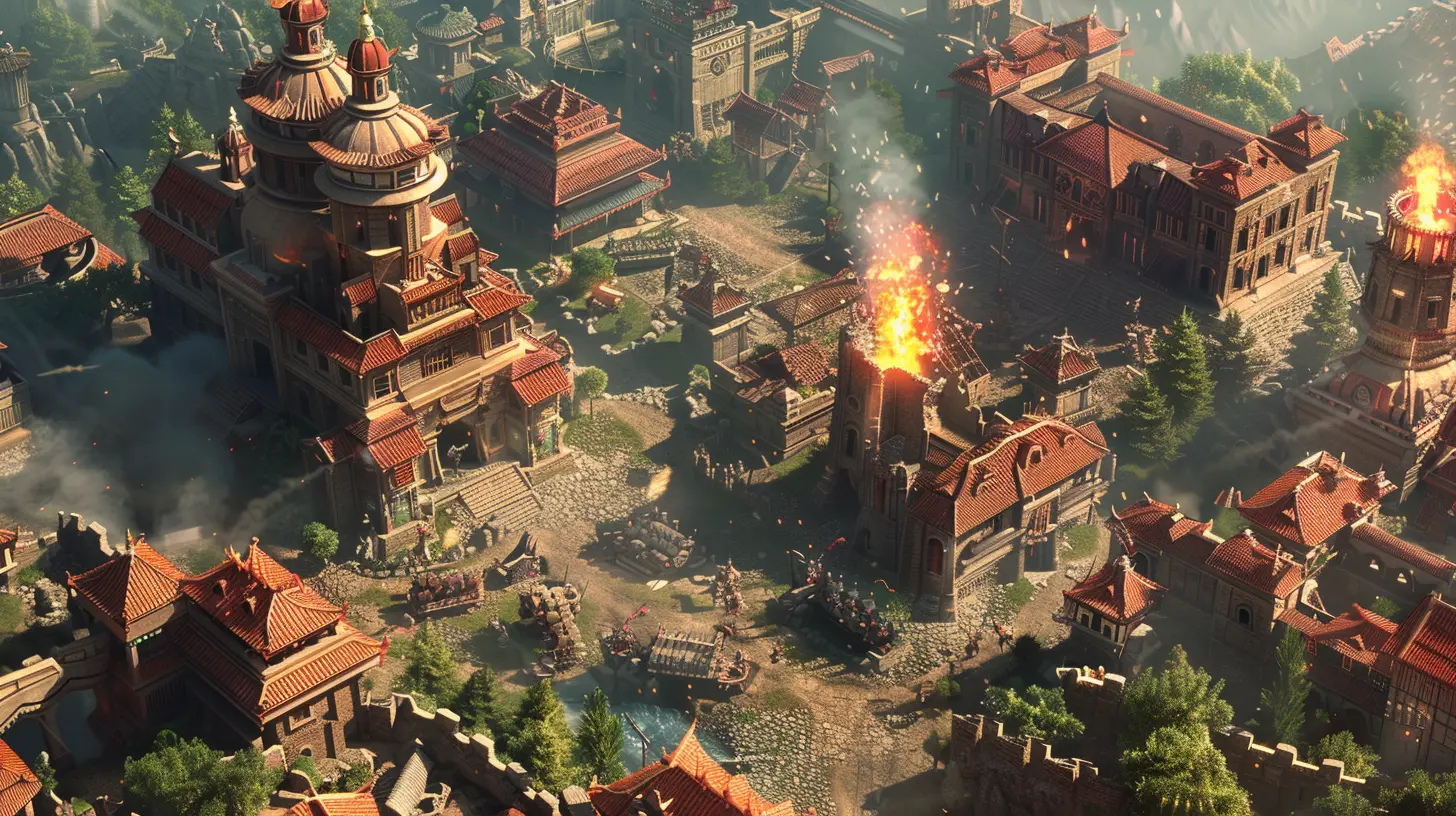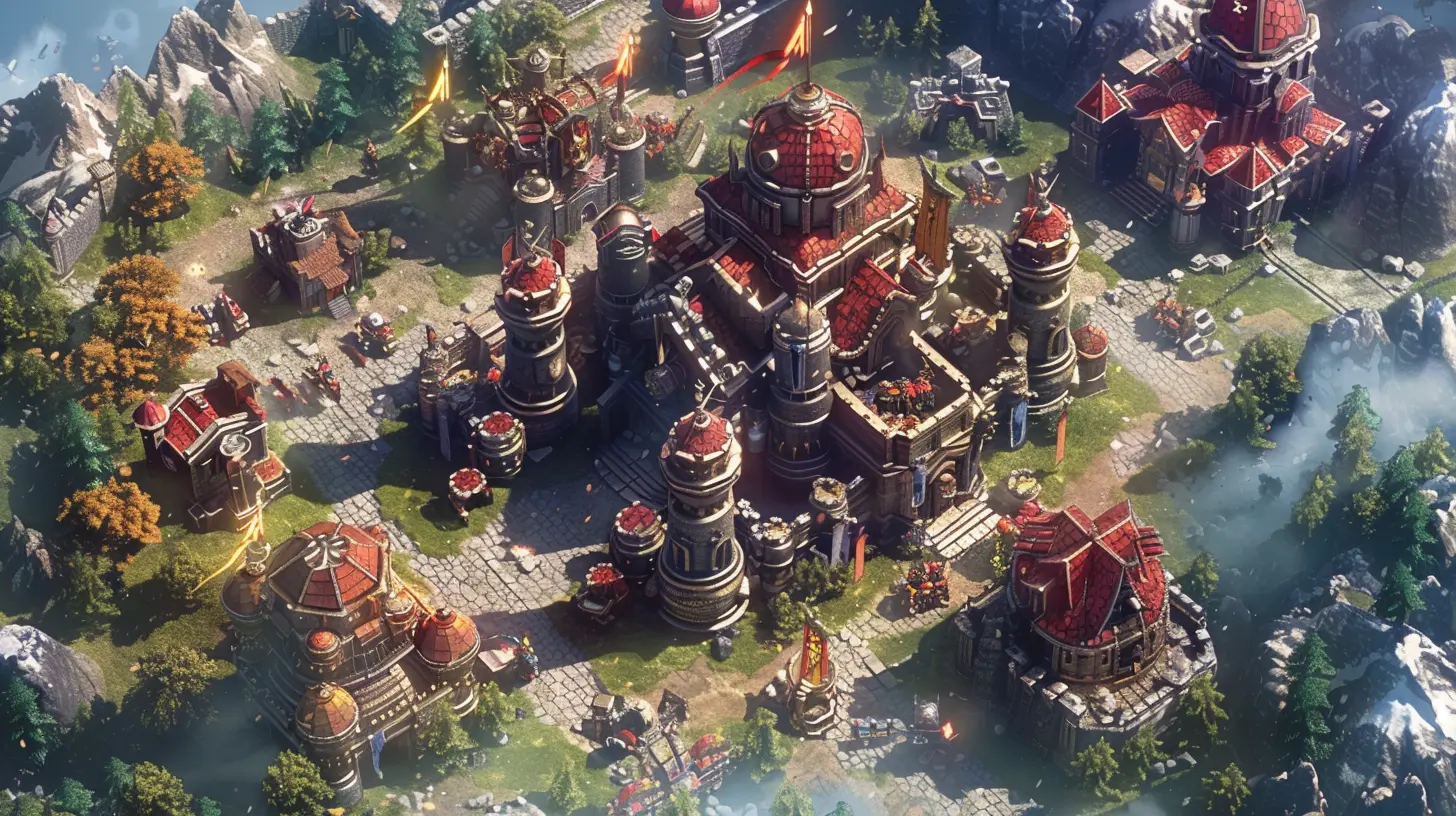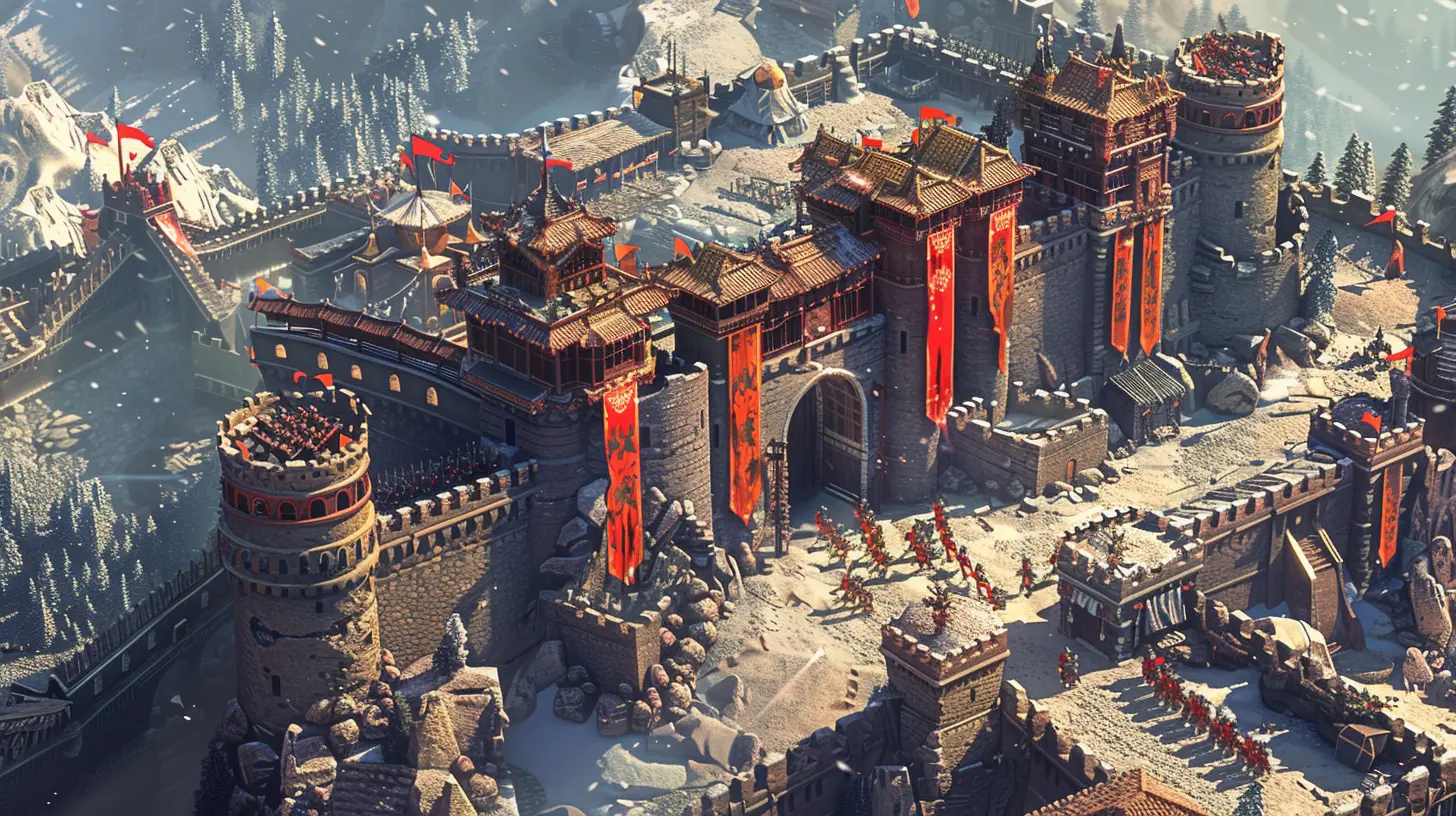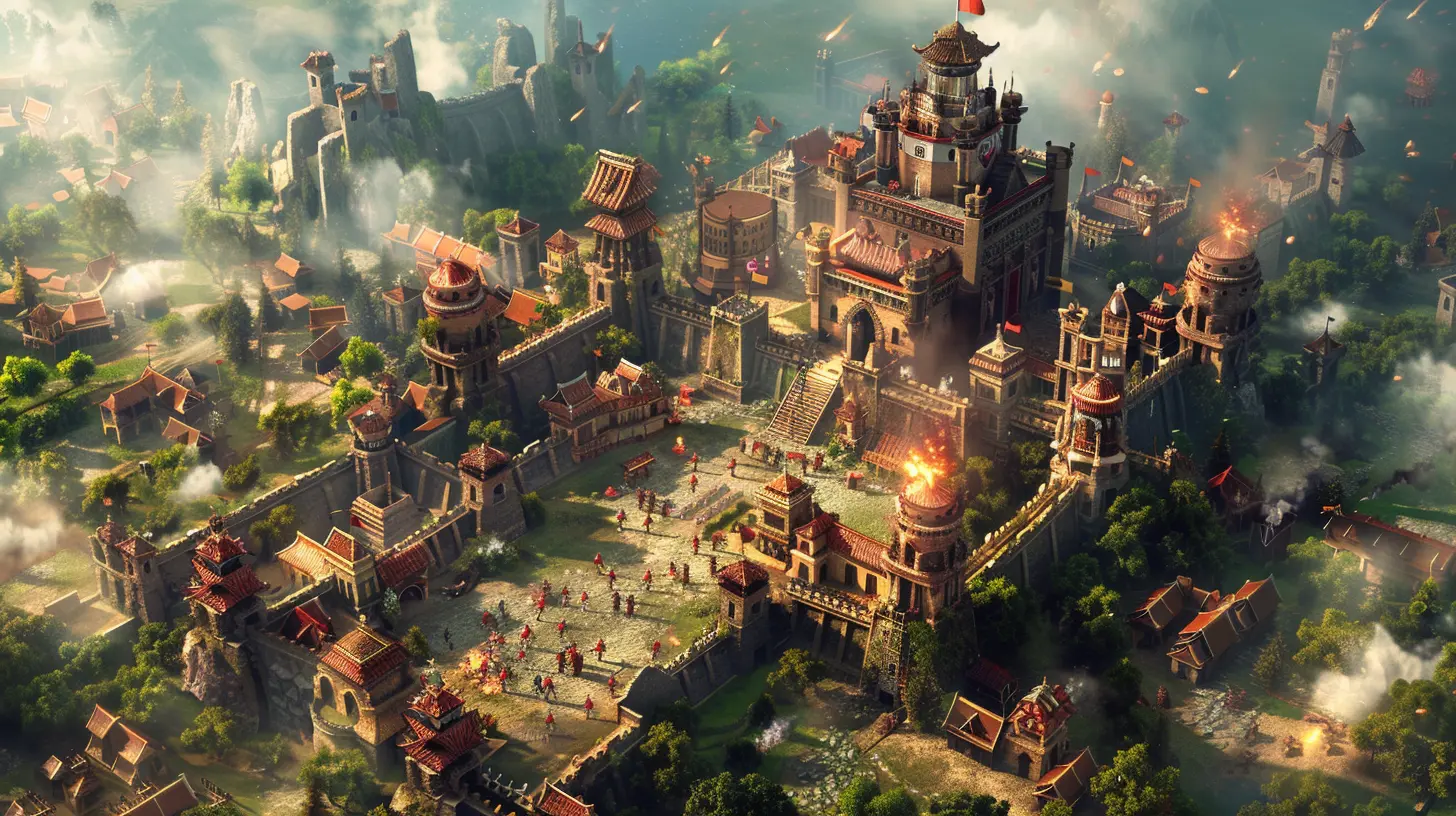The Best Defensive Strategies to Keep Your Base Safe
18 October 2025
Let’s face it—there’s nothing more frustrating than building a kickass base only to wake up and find it completely raided. Whether you’re grinding away on Clash of Clans, going hardcore in Rust, or holding the line in Age of Empires, your base is your kingdom. And if you’re not protecting it like a dragon hoarding gold, someone else is going to storm in and take what’s yours.
So, how do you stop that from happening? How do you keep the looters, griefers, and enemies out? You need defensive strategies—smart ones. Not just a wall and a few traps. I’m talking layered, psychological, and adaptive defenses. And don’t worry, I’ve got you covered.
In this guide, we’re diving deep into the best defensive strategies to keep your base safe—no matter what type of game you’re playing. Ready? Let’s build a base no one dares to mess with.
1. Start with a Solid Base Layout
Before you worry about what kind of turrets or traps you’ll use, you need to get your layout right. Think of your base as a puzzle. If you build it poorly, you’re basically handing your enemies a cheat sheet.A. Symmetry Is Predictable—Ditch It
A symmetrical base might look pretty, but it’s easier to predict and break into. Instead, create a layout with twists, turns, and dead ends. Confuse your enemy. The harder it is to understand your base, the more time they waste—and time is your best friend in a raid.B. Use Natural Terrain to Your Advantage
Is your game map full of cliffs, rivers, or mountains? Use them. Building next to natural barriers makes your base harder to reach from certain angles. That’s fewer sides to defend, which means more concentrated firepower where it counts.C. Layered Defense Is Smart Defense
Think of your base like an onion—layers within layers. The more walls and doors someone has to get through, the more time and resources they burn. Add decoy rooms, trap corridors, and even empty bait stashes to throw off attackers.
2. Strategic Wall Placement—It’s Not Just About Building a Wall
Walls aren’t just big blocks that stand in the way. They’re psychological tools. And when placed cleverly, they can become your best line of defense.A. Double & Triple Wall Sections
Single-layered walls are laughable. You want attackers to gnash their teeth. Double or triple your important sections so it takes more time—and more explosives—to punch through.B. False Entrances and Trap Rooms
Create entrances that look legit but lead to nothing or worse—traps. It's mind games 101. Most raiders will follow the obvious path. Make them regret it.C. Honeycombing
If you're into base-builders like Rust or ARK, you've probably heard of honeycombing. It’s basically building extra rooms around your core with no real purpose other than soaking up damage. Like armor for your base.
3. Turrets, Traps, and Towers—Your Base's Security System
Automation is your friend. While you can’t always be online or watching every angle, defensive tools can do it for you. Set it and forget it? Yes, please.A. Turret Placement
Don’t just drop a turret at every corner. Place them where they cover blind spots and overlap each other’s fields of fire. That way, if someone disables one, another’s already got them in its sights.B. Traps Aren’t Just for Fun—They’re Tactical
Pressure plates, landmines, hidden spike pits—traps discourage enemies from charging in. Use them sparingly, though. A base filled with traps screams “paranoid player” and may attract more attackers just for fun.C. Guard Towers and High Ground
Height equals power. Build towers so you get the upper hand—literally. Watchtowers give you better visibility, shot accuracy, and intimidation points. No one wants to walk into a sniper's crosshairs.
4. Defensive AI & NPCs—The Best Hired Help
In games that let you recruit AI defenders or NPC guards (like Fallout 76, Conan Exiles), don’t underestimate them. They're often underestimated, but a few well-placed followers can mess up a solo raider’s entire strategy.A. Assign Roles to NPCs
Have guards patrol choke points or protect the loot room while farmers and crafters stay in the inner base. Diversify their duties so if one area falls, another is still protected.B. Upgrade Equipment
Don’t give your NPCs peashooters. Gear them up like they’re ready for war. Strong defenders force enemies to spend more resources than they planned.5. Resource Management—Don’t Put All Your Loot in One Basket
You’ve heard the saying, "Don’t keep all your eggs in one basket"? Yeah, that applies big time here.A. Create Decoy Loot Rooms
Set up multiple loot rooms and stash your best gear in the least obvious one. Let one room be the bait. Most raiders will stop once they find a decent haul—especially if they think that was your “main stash.”B. Use Hidden Compartments
Hide loot in floors, ceilings, or even outside your base if the game allows. The fewer people that know about your hiding spots, the safer your stash.C. Regularly Rotate Valuable Loot
Keep things moving. Don’t store everything in one place for long periods. If someone scouts your base and sees where you keep your goodies, switch things up. Be unpredictable.6. Offline Defense—Because You Can’t Be Online 24/7
Let’s be real. You’ve gotta eat, sleep, and live your life. So, protecting your base while you’re offline? That’s crucial.A. Stronger Doors and Entry Points
Invest in the strongest doors or gates available. Reinforce chokepoints. Make every inch of your base fight back.B. Raid Timers and Shields
In some games, you can set raid timers or activate shields. Time them smartly. Don’t rely on them, but use them as your safety net while you’re away.C. Automated Alarms and Surveillance
Install camera systems or alarms if your game allows. That way, when you log back on, you’ll know if something went down. Information is power.7. Psychological Warfare—Scare Them Before They Attack
Sometimes the best defense is making sure they never attack in the first place. Enter the mind games.A. Appear Active
A base that looks lived-in is less likely to be hit. Keep fires burning, crops growing, and doors moving. People are less likely to raid if they think you’re five feet away with a shotgun.B. Display Power
Mount trophies, skulls, or rare gear where attackers can see them. Brag a little. Intimidation is part of the strategy.C. Leave Bait for Scouts
Leave out some mid-level loot in an obvious chest. When a scout reports back, they’ll think your base isn’t well defended—or not worth the effort. Less heat on you.8. Team Up—Strength in Numbers
Going solo is fun and all, but if you’re tired of losing your base, maybe it’s time to squad up.A. Designate Roles in a Clan or Group
Divide responsibilities—builder, defender, farmer, raider. When everyone knows their job, your base becomes a well-oiled machine.B. Set Guard Rotations
If you're in a large group, create rotation schedules for who watches the base and when. Less downtime, fewer attacks.C. Group Chat & Fast Response
Use voice or group chat to respond quickly to threats. A fast defense is often the winning defense.9. Update and Adapt Constantly
Your enemies adapt. They learn your base. They test it. So should you.A. Change Your Layout Periodically
Move your loot, add new rooms, change turret placements. Keep your enemies guessing.B. Watch Raid Replays or Use Scouting Reports
If your game offers raid logs or replays, study them. Figure out what went wrong—and fix it.C. Stay Informed on Patch Notes
Game developers change balancing regularly. A trap that was OP last week might be nerfed today. Stay ahead or fall behind.Wrapping It Up – Lock It Down!
If you’ve made it this far, congrats! You’re now equipped with some of the best defensive strategies to keep your base safe. Just remember, no base is 100% unraidable. But with smart planning, layered defenses, psychological tricks, and a bit of paranoia, you’ll make attackers think twice before messing with you.Now get back out there, build smarter, defend harder, and protect what’s yours. Your future self (and your loot) will thank you.
all images in this post were generated using AI tools
Category:
Strategy GamesAuthor:

Jack McKinstry
Discussion
rate this article
1 comments
Rusty McRae
Great insights on defensive strategies! I particularly appreciated the focus on resource management. These tips will definitely help players enhance their base security and elevate their gameplay. Thanks for sharing!
October 26, 2025 at 4:34 AM

Jack McKinstry
Thank you for your feedback! I'm glad you found the resource management tips helpful for enhancing base security. Happy gaming!


